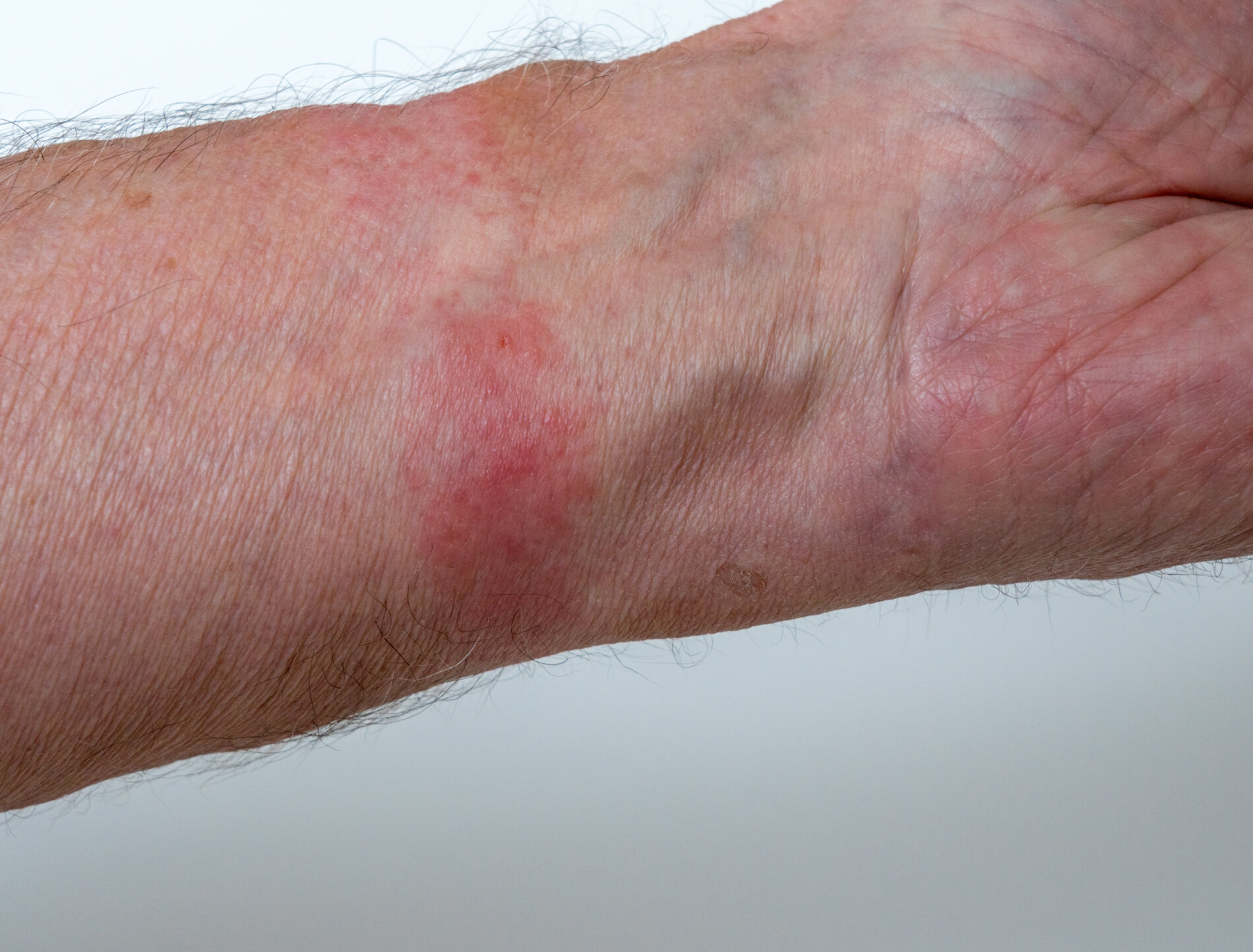Contact Dermatitis
Contact dermatitis is a skin rash that occurs when the body has an allergic reaction to an outside source called an "allergen". Common allergens are nickel, cobalt, fragrances and cosmetics. Anyone can experience contact dermatitis, and you may be exposed to an allergen for years before developing a reaction to it.

Symptoms
Typically, within 12-72 hours of exposure to the allergen, a rash will appear where you made contact. This rash can be red, itchy, and scaly. The rash may also have bumps or blisters.
Treatment
Over-the-counter antihistamines and creams may provide relief for mild reactions. For more severe cases, our providers can prescribe topical or oral medications. If contact dermatitis is recurrent, we can perform tests that may help identify the causative allergen.
When to make an appointment
For severe, unresponsive, spreading or recurrent dermatitis, Contact Us for treatment and, in appropriate cases, to test for the causative allergen(s).